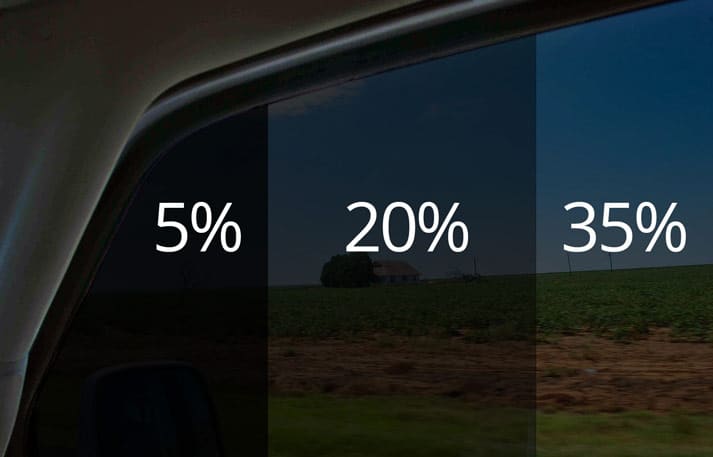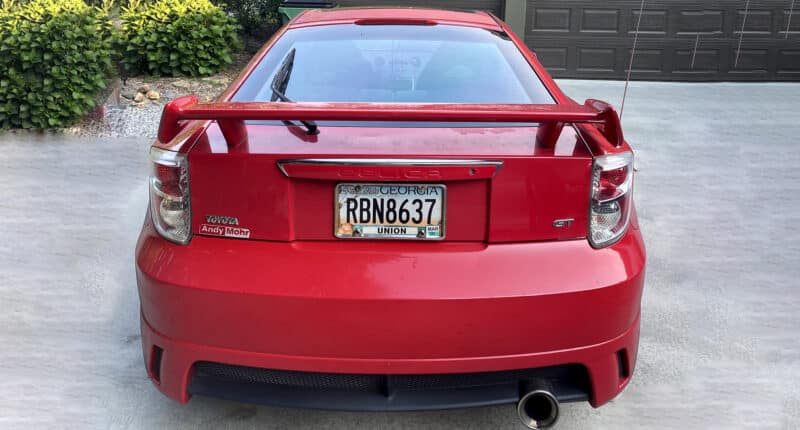With summer temperatures soaring beyond 95°F, any means of cooling your car down are welcome in the Peach State. One way to do this is by getting your windows tinted.
Tinted windows are an excellent upgrade when it comes to keeping the heat out, protecting your privacy, and allowing for better daytime vision by blocking out the sun’s glare.
However, before heading to the workshop with your car, it’s important that you know about the laws concerning tinted windows in Georgia. That’s exactly what we’ll discuss in this article.
Is Window Tint Legal in Georgia?

Window tint laws were implemented in Georgia in 2005, which is a lot later than most other states in the country.
As long as you follow the stipulated guidelines, tinted windows are completely legal in this state.
The laws are only there to ensure that you get the maximum benefit from having your windows tinted, while also keeping yourself and others safe.
That’s why windows can only be tinted up to a certain level of darkness and they must allow a certain percentage of light to pass through.
Each window in your car (the front and rear windshield, front windows, and rear passenger windows) needs to be tinted according to the required specifications.
Below we’ll discuss the rules and regulations concerning window tints in Georgia.
Permitted Window Tint Darkness

In order to know how dark your window can be tinted, it’s important to understand what VLT or “visible light transmission” is.
Simply put, VLT refers to the amount of ambient light that’s transmitted through a glass surface or lens; tinted windows in this case.
VLT is expressed in percentage form. For example, a tinted film with a VLT level of 50% will allow only 50% of the ambient light to pass through.
High VLT windows will allow more light to pass through, whereas low VLT windows will restrict the amount of light passing through.
Here’s a breakdown of the VLT levels permitted in the various windows of different types of vehicles.
Sedans

Windshield: Non-reflective tinted film of any VLT level can be installed on the top 6″ of the windshield.
Driver-side windows: The tinted film must have 32% VLT or higher.
Passenger-side windows: 32% VLT or higher.
Rear window: The tinted film must let in 32% of the ambient light or higher.
SUVs and Vans
Windshield: Non-reflective tinted film of any VLT level can be installed above the windshield’s AS1 line.
Driver-side windows: The amount of light allowed through the tinted film must be 32% or higher.
Passenger-side windows: Tinted film of any VLT level can be used.
Rear window: Tinted film of any VLT level can be used.
Acceptable Tint Reflection
Reflective tinted windows, as the name suggests, work like mirrors and reflect any incoming light, effectively reducing glare and any disturbances caused to the driver’s vision while driving.
Reflective tint film also does a great job of reducing the amount of heat trapped inside your car cabin.
Reflective tints prevent anyone on the outside from being able to see into the vehicle. The more the reflectiveness, the lower the ability to see through the glass.

Georgia’s prescribed tint reflection levels are stated below:
Windshield: The tint film should be completely non-reflective.
Driver-side windows: Upto 20%.
Passenger-side windows: Upto 20%.
Rear window: Upto 20%.
Other Georgia Tint Rules You Need to Know
Here are some more rules to keep in mind when it comes to Georgia’s tint rules:
- Side mirrors: Unlike most other states, side mirrors are not compulsory in Georgia, regardless of whether or not the rear windshield is tinted. Side mirrors are only necessary if there is any obstruction in vision and if the car is factory-tinted.
- Color restrictions: Amber and red window tint colors are illegal in Georgia.
- Tint variance: A variance of up to 3% is allowed (for example, a tint of 35% VLT is allowed on driver-side windows; the required VLT level is 32%).
- Stickers: No stickers are required to certify the legality of the tint film.
- Manufacturer’s certificate: Tint manufacturers need to get their products certified in order to sell them in Georgia.
- Medical exemptions: Medical exemptions are accepted and special tint specifications are applicable in such cases.
- Penalties: Offenders can face a fine of up to $1,000 under misdemeanor charges as well as up to 12 months of jail time.
State of Georgia Info

Founded in 1732, Georgia went on to become a British royal colony before eventually becoming the prosperous Southeastern state that it is today.
It is the country’s 24th-largest and 8th-most populated state.
Georgia is bordered by North Carolina, Tennessee, South Carolina, the Atlantic Ocean, Alabama, and Florida. The state is known for its diverse flora, fauna, and landscapes.
Population: 3,973,574
Capital: Atlanta
Registered vehicles: 3,538,180
Total lane miles: 272,662
Number of highways: 15
Tint law references: H.B. 20 (Window Tint) – Amends 40-8-73.1
Medical exemption references: Georgia Department of Public Safety

